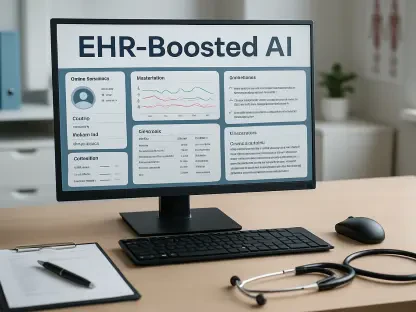In a world where healthcare disparities persistently undermine the well-being of millions, particularly among underserved and underinsured communities across the United States and globally, public-private partnerships have emerged as a powerful force for change, uniting the mission-driven focus of non-profits with the resources and innovation of corporations. These collaborations are tackling some of the most pressing challenges in healthcare access. Charitable clinics, often strained by funding shortages and overwhelming patient demand, struggle to provide basic care, leaving many without essential services. This article delves into how strategic alliances are stepping in to fill these critical gaps, delivering not just supplies but also sustainable solutions. By combining expertise, technology, and community outreach, such partnerships are transforming the landscape of care for vulnerable populations, offering hope where systemic barriers once stood.
Addressing Systemic Healthcare Challenges
Healthcare providers serving marginalized populations face a relentless battle against limited resources, with budget cuts and inconsistent government support, such as fluctuating Medicaid distributions, exacerbating the crisis. Many charitable clinics find themselves unable to keep up with the rising tide of patients seeking care, often lacking even the most basic equipment for diagnostics or treatment. This shortage directly impacts lives, delaying critical interventions and widening health inequities across communities. Public-private partnerships have become a lifeline in this scenario, stepping in with financial backing, material donations, and innovative approaches to address these deep-rooted issues. By aligning corporate capabilities with the grassroots knowledge of non-profits, these collaborations ensure that resources reach the front lines of care, where they are needed most, creating a direct impact on patient outcomes.
The ripple effects of inadequate healthcare access touch every aspect of society, from preventable illnesses escalating into emergencies to families facing financial ruin due to medical costs. Partnerships between corporations and organizations like MedShare are not merely stopgap measures but strategic efforts to rebuild trust in the system. They provide clinics with tools to deliver timely care, while also fostering long-term resilience through training and infrastructure support. This dual focus on immediate relief and systemic improvement sets a new standard for how healthcare challenges can be met. By prioritizing equity, these alliances are helping to dismantle barriers that have long prevented vulnerable groups from receiving the care they deserve, proving that collaboration can drive meaningful progress.
Transforming Care with Technology and Resources
A standout example of the impact of corporate collaboration is the partnership between MedShare and BD (Becton, Dickinson and Company), which facilitated the largest single donation of medical equipment in MedShare’s history—92 ultrasound machines distributed to 80 free and charitable clinics across 30 states. This initiative, supported by the National Association of Free & Charitable Clinics, has significantly enhanced diagnostic capabilities in critical areas such as cardiac, obstetric, and gynecological care for underserved patients. Beyond the physical equipment, BD’s involvement in developing a custom database tool has streamlined impact tracking, allowing clinics to better report how donations translate into improved care. This blend of tangible resources and operational innovation showcases the potential of partnerships to address both immediate needs and underlying inefficiencies in healthcare delivery.
Corporate support extends far beyond donations, bringing scalability and expertise into play to revolutionize access to care. Such collaborations often focus on creating programs that prioritize measurable outcomes, ensuring that every contribution makes a lasting difference. For instance, the integration of technology in clinics not only improves day-to-day patient care but also empowers providers with data to advocate for further support. These efforts highlight a shift from temporary aid to building a foundation for sustainable health services. By equipping clinics with modern tools and systems, partnerships are enabling providers to meet growing demands with confidence, ultimately narrowing the gap between those who have access to quality care and those who do not, fostering a more inclusive healthcare environment.
Strengthening Disaster Readiness and Response
In the face of natural disasters, public-private partnerships are proving indispensable, as demonstrated by MedShare’s collaboration with Philips North America and the Philips Foundation. Their two-year pilot program focuses on disaster preparedness by staging life-saving equipment like ultrasound systems and mother-and-child care products for rapid deployment during crises. This initiative ensures that healthcare continuity is maintained even in the most challenging conditions, with field service engineers provided to guarantee equipment functionality. Additionally, activities like assembling BabySafe Emergency Kits reflect a commitment to addressing both clinical and personal needs in affected areas. This model offers a scalable framework for sustaining care during emergencies, highlighting the forward-thinking nature of such alliances.
Sustainability is a core pillar of these disaster-focused partnerships, with an emphasis on reusing and reprocessing equipment post-crisis to minimize waste and maximize impact. This approach not only aids immediate recovery but also prepares communities for future challenges, protecting the most vulnerable when systems are under strain. By anticipating the chaos that disasters bring, these collaborations mitigate the risk of healthcare collapse in critical moments. The proactive staging of resources ensures that aid is not delayed by logistics, allowing for swift action that saves lives. Such efforts underscore the potential of strategic alliances to go beyond reaction, creating resilient frameworks that safeguard health access no matter the circumstances, and setting a precedent for global disaster response strategies.
Humanizing Impact Through Volunteer Engagement
Another vital dimension of public-private partnerships is the human connection fostered through volunteerism, exemplified by the long-standing collaboration with athenahealth. Through initiatives like the athenaGives September for Service event, over 60 employees, affectionately known as “athenistas,” assembled hundreds of Clean Birthing Kits at their campus in Belfast, Maine. These kits, packed with 13 essential items for safe deliveries, have supported mothers in remote and underserved regions worldwide, with nearly 15,000 kits created to date. This hands-on involvement not only addresses maternal health needs but also builds a culture of shared purpose between corporate teams and non-profit missions, amplifying the reach of care to free and charitable clinics across the U.S.
The personal investment of corporate volunteers adds a profound layer to these partnerships, turning abstract goals into tangible outcomes for individuals and families. Employee engagement in such initiatives bridges the gap between distant boardrooms and the realities of healthcare deserts, fostering empathy and commitment to social good. This direct participation often inspires broader corporate responsibility, encouraging companies to integrate community impact into their core values. By focusing on initiatives that resonate on a human level, such as ensuring safe childbirth, these alliances remind stakeholders that healthcare access is not just a logistical challenge but a deeply personal cause, driving efforts to expand support for those who need it most.
Paving the Way for a Healthier Tomorrow
Looking back, the strides made through public-private partnerships in healthcare reveal a transformative path forward, as collaborations with entities like BD, Philips, and athenahealth have delivered critical resources and innovative solutions to underserved communities. These alliances tackled immediate needs with equipment donations and disaster kits, while also laying the groundwork for systemic change through data tools and sustainable models. The human stories of safer births and timely diagnoses underscore the profound impact of such efforts. Moving ahead, the focus should shift to scaling these models, encouraging more corporations to join hands with non-profits in crafting adaptable, equity-driven programs. Governments and policymakers could further support by creating incentives for partnerships, ensuring that the momentum built continues to address evolving healthcare challenges with creativity and resolve.









